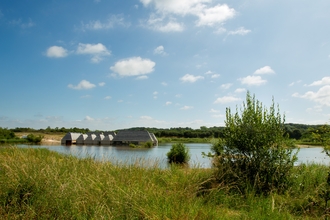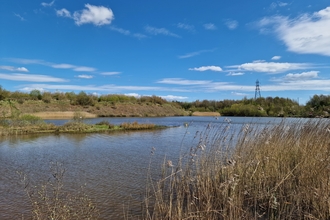Winter is such a great time to go birdwatching in the UK purely because it’s such a harsh season. Food is harder to find, it’s difficult to stay warm, and predators take full advantage of those living life on the edge. The only thing for birds to do is take a sabbatical in warmer climes, flock together for warmth and safety, or in many cases, both! Keep an eye out for these wonderful winter birds on your next walk.
Northern grit: Which birds can you see toughing it out this winter?
Snow bunting by Mark Hamblin/2020VISION
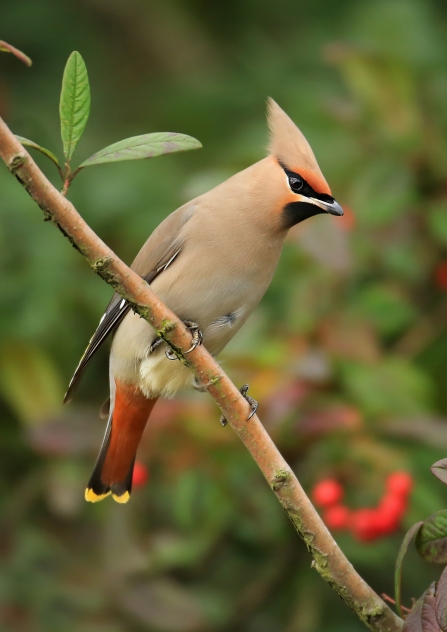
Waxwing by Jon Hawkins - Surrey Hills Photography
Waxwings
Their black and white eye-stripes, perfectly-coiffed hair and bright flashes of colour give waxwings a look of Adam Ant. These New Romantics spend the bulk of their year in Scandinavia and Siberia, but if the winter berry crop is poor in their home country they’ll flock to our shores to gorge on our own berries, particularly rowan and hawthorn.
It’s hard to predict when we’ll get a particularly large irruption of waxwings, but checking the @WaxwingsUK Twitter account is a great way to stay up to date.
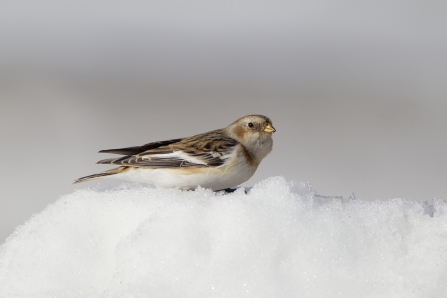
Snow bunting by Mark Hamblin/2020VISION
Snow buntings
These pretty little birds definitely aren’t one of our most common winter visitors, but if you’re lucky you might spot small groups of them in Lancashire.
Snow buntings flee even harsher winters in Iceland to tough it out on our beaches and upland slopes, their white chest and buff patches helping them blend in with their sandy surroundings. In our region the best places to try and see them are the Fylde and Sefton coasts, but there’s a chance you could spot them inland too, where they’ve been recorded on Pendle Hill.
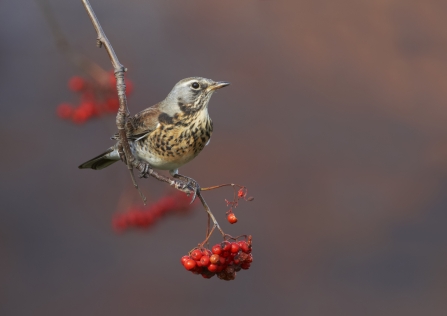
Fieldfare by Richard Steel/2020VISION
Winter thrushes
Is it even winter until redwings and fieldfares – our famous winter thrushes – arrive from their breeding grounds in northern Europe? Redwings are around the size of a blackbird, have a bright white eye stripe and a beautiful rusty-red patch under each wing. Fieldfares are larger and have a grey head and tail, plus chestnut-brown wings and a cream chest.
These birds both travel in noisy groups and you’ll often hear them before you see them. Redwings are best searched for in trees bearing bountiful berries, while fieldfares prefer feeding on windfall fruit and soil invertebrates in fields. As winter harshens and the soil gets harder to probe, however, you’re more likely to see fieldfares and redwings foraging on berries together.
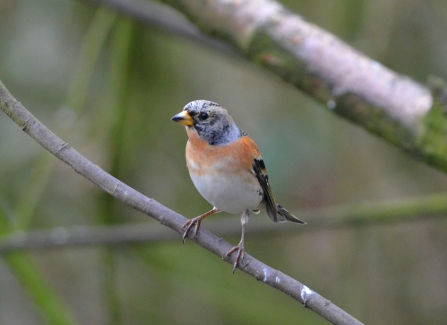
Brambling by Brian Jones
Mixed finch flocks
Winter finch flocks are a prime example of safety in numbers. When the mercury drops it isn’t unusual to see goldfinches, chaffinches, greenfinches and even bramblings roaming around in mixed groups. Travelling en-masse means more eyes to spot opportunistic predators, which in turn means the finches can spend more time eating and less time being on high alert; very important when your tiny body has to use huge amounts of energy just to keep from freezing.

Wader flock by Terry Whittaker/2020VISION
Thousands of wading birds
Every autumn and winter the UK’s coasts and wetlands are inundated with around half a million lapwings from across northern Europe; half a million dunlin from Scandinavia; 300,000 knot from northern Canada; 300,000 oystercatchers from Iceland and Norway; 60,000 bar-tailed godwits from north west Russia; 50,000 Icelandic redshanks; and 40,000 grey plovers from the Arctic. Phew!
Many of these gorgeous waders join our own local birds: scampering, bickering and jostling for space on the mudflats of Morecambe Bay, the estuaries of Lancashire and coastal refuges around Merseyside. Visitors recently counted up to 5,000 knot at Seaforth alone!
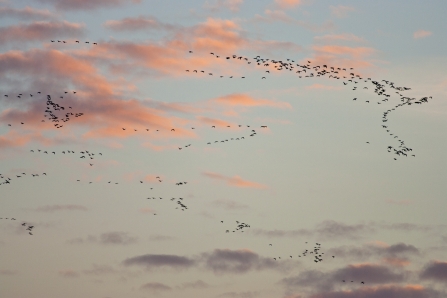
Skein of geese by Guy Edwardes
Wonderful wildfowl
Contrary to what the ’12 Days of Christmas’ would have you believe, geese aren’t laying in winter – they are, however, staging a mass exodus to our region. You know it’s winter when a huge skein of noisy geese flies overhead in their iconic v-formation. Pink-footed geese are by far the most numerous and are best seen feeding in the fields bordering Lunt Meadows.
Geese aren’t the only winter wildfowl to stick on your must-see list this season. Lancashire and Merseyside in particular see fantastic influxes of ducks from colder parts of Europe. Teal and tufted ducks are some of the most common, while gadwall, wigeon, goldeneyes and pintails see their numbers swell too.
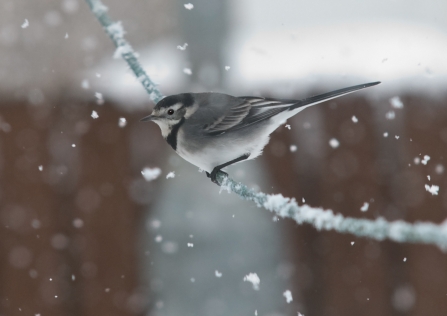
Pied wagtail by Bob Coyle
Pied wagtail roosts
Starlings aren’t the only birds that form impressive flocks during winter. Pied wagtails – quite solitary for the rest of the year – come together on dark evenings to roost in tightly packed groups in nearby trees. Surprisingly, towns and cities are some of the best places to see winter pied wagtail roosts, as the birds take full advantage of being sheltered from predators and surrounded by warm buildings.
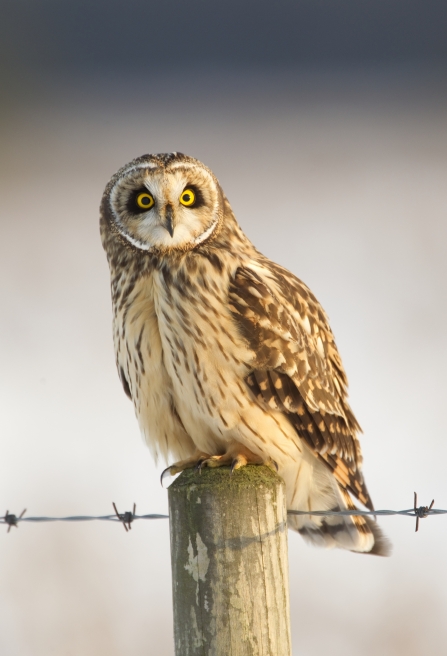
Short-eared owl by Danny Green/2020VISION
Short-eared owls
Short-eared owls are an upland speciality in spring and summer, but during winter, they move to wetlands and coastal marshes where they’re met by an influx of continental short-eared owls from Iceland, Scandinavia and Russia. They hunt low in the daytime – quartering fields and mudflats as they search for small mammals – and roost in communal groups.


